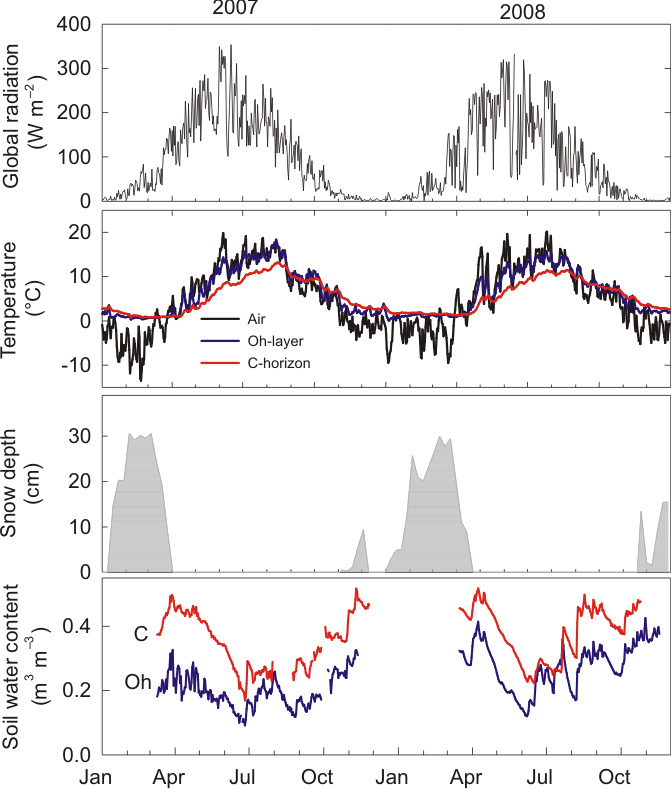The movements of Earth in relation to the Sun generate a strong annual cycle of radiation and temperature that further affects other environmental factors such as soil moisture and air humidity. Environmental factors affect physiological processes and therefore, identification and understanding of their nature is needed in order to understand and predict the biological actions of a forest.
The variation in solar radiation during a day or a year drives the changes in temperature and air humidity: air temperature follows the seasonal and diurnal changes in solar radiation, whereas the minimum temperature of the day, for example, drives the air water content. Variation in CO2 concentration is an exception. Light drives the functioning of marine and terrestrial ecosystems, which in turn affects the carbon dioxide concentration. However, light is not pursuing its variation, because human activities, such as house heating in the northern hemisphere during winter and other fossil fuel emissions affect CO2 concentrations.
Read more about solar radiation, CO2 concentration, soil temperature, air temperature, soil moisture and air humidity.
Environmental factors are widely discussed in the book: Hari P, Heliövaara K, Kulmala L (Eds.) 2013. Physical and Physiological Forest Ecology. Springer

